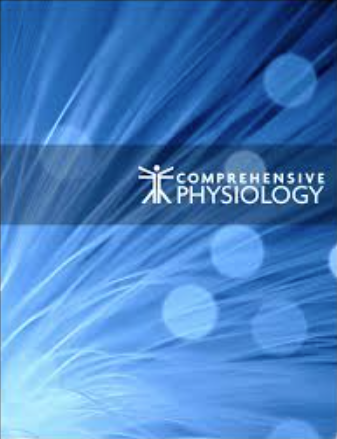下载PDF
{"title":"老年肺和气肿肺的重塑:微环境线索的作用","authors":"Béla Suki, Jason H T Bates, Erzsébet Bartolák-Suki","doi":"10.1002/cphy.c210033","DOIUrl":null,"url":null,"abstract":"<p><p>Aging is a slow process that affects all organs, and the lung is no exception. At the alveolar level, aging increases the airspace size with thicker and stiffer septal walls and straighter and thickened collagen and elastic fibers. This creates a microenvironment that interferes with the ability of cells in the parenchyma to maintain normal homeostasis and respond to injury. These changes also make the lung more susceptible to disease such as emphysema. Emphysema is characterized by slow but progressive remodeling of the deep alveolar regions that leads to airspace enlargement and increased but disorganized elastin and collagen deposition. This remodeling has been attributed to ongoing inflammation that involves inflammatory cells and the cytokines they produce. Cellular senescence, another consequence of aging, weakens the ability of cells to properly respond to injury, something that also occurs in emphysema. These factors conspire to make alveolar walls more prone to mechanical failure, which can set emphysema in motion by driving inflammation through immune stimulation by protein fragments. Both aging and emphysema are influenced by microenvironmental conditions such as local inflammation, chemical makeup, tissue stiffness, and mechanical stresses. Although aging and emphysema are not equivalent, they have the potential to influence each other in synergistic ways; aging sets up the conditions for emphysema to develop, while emphysema may accelerate cellular senescence and thus aging itself. This article focuses on the similarities and differences between the remodeled microenvironment of the aging and emphysematous lung, with special emphasis on the alveolar septal wall. © 2022 American Physiological Society. Compr Physiol 12:3559-3574, 2022.</p>","PeriodicalId":10573,"journal":{"name":"Comprehensive Physiology","volume":"12 3","pages":"3559-3574"},"PeriodicalIF":4.2000,"publicationDate":"2022-06-29","publicationTypes":"Journal Article","fieldsOfStudy":null,"isOpenAccess":false,"openAccessPdf":"https://www.ncbi.nlm.nih.gov/pmc/articles/PMC11470990/pdf/","citationCount":"0","resultStr":"{\"title\":\"Remodeling of the Aged and Emphysematous Lungs: Roles of Microenvironmental Cues.\",\"authors\":\"Béla Suki, Jason H T Bates, Erzsébet Bartolák-Suki\",\"doi\":\"10.1002/cphy.c210033\",\"DOIUrl\":null,\"url\":null,\"abstract\":\"<p><p>Aging is a slow process that affects all organs, and the lung is no exception. At the alveolar level, aging increases the airspace size with thicker and stiffer septal walls and straighter and thickened collagen and elastic fibers. This creates a microenvironment that interferes with the ability of cells in the parenchyma to maintain normal homeostasis and respond to injury. These changes also make the lung more susceptible to disease such as emphysema. Emphysema is characterized by slow but progressive remodeling of the deep alveolar regions that leads to airspace enlargement and increased but disorganized elastin and collagen deposition. This remodeling has been attributed to ongoing inflammation that involves inflammatory cells and the cytokines they produce. Cellular senescence, another consequence of aging, weakens the ability of cells to properly respond to injury, something that also occurs in emphysema. These factors conspire to make alveolar walls more prone to mechanical failure, which can set emphysema in motion by driving inflammation through immune stimulation by protein fragments. Both aging and emphysema are influenced by microenvironmental conditions such as local inflammation, chemical makeup, tissue stiffness, and mechanical stresses. Although aging and emphysema are not equivalent, they have the potential to influence each other in synergistic ways; aging sets up the conditions for emphysema to develop, while emphysema may accelerate cellular senescence and thus aging itself. This article focuses on the similarities and differences between the remodeled microenvironment of the aging and emphysematous lung, with special emphasis on the alveolar septal wall. © 2022 American Physiological Society. Compr Physiol 12:3559-3574, 2022.</p>\",\"PeriodicalId\":10573,\"journal\":{\"name\":\"Comprehensive Physiology\",\"volume\":\"12 3\",\"pages\":\"3559-3574\"},\"PeriodicalIF\":4.2000,\"publicationDate\":\"2022-06-29\",\"publicationTypes\":\"Journal Article\",\"fieldsOfStudy\":null,\"isOpenAccess\":false,\"openAccessPdf\":\"https://www.ncbi.nlm.nih.gov/pmc/articles/PMC11470990/pdf/\",\"citationCount\":\"0\",\"resultStr\":null,\"platform\":\"Semanticscholar\",\"paperid\":null,\"PeriodicalName\":\"Comprehensive Physiology\",\"FirstCategoryId\":\"3\",\"ListUrlMain\":\"https://doi.org/10.1002/cphy.c210033\",\"RegionNum\":2,\"RegionCategory\":\"医学\",\"ArticlePicture\":[],\"TitleCN\":null,\"AbstractTextCN\":null,\"PMCID\":null,\"EPubDate\":\"\",\"PubModel\":\"\",\"JCR\":\"Q1\",\"JCRName\":\"PHYSIOLOGY\",\"Score\":null,\"Total\":0}","platform":"Semanticscholar","paperid":null,"PeriodicalName":"Comprehensive Physiology","FirstCategoryId":"3","ListUrlMain":"https://doi.org/10.1002/cphy.c210033","RegionNum":2,"RegionCategory":"医学","ArticlePicture":[],"TitleCN":null,"AbstractTextCN":null,"PMCID":null,"EPubDate":"","PubModel":"","JCR":"Q1","JCRName":"PHYSIOLOGY","Score":null,"Total":0}
引用次数: 0
引用
批量引用


